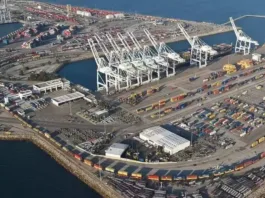In the wake of persistent food inflation woes, The Broken News – particularly concerning rice prices, India is gearing up to implement measures aimed at curbing the soaring costs. Despite a slight ease in food inflation in March, rice prices have remained alarmingly high, registering a significant 12.7% increase. This surge has prompted the government to strategize alternative interventions to stabilize the market.
Reduction in Broken Percentage for Rice Exports
One of the key strategies being considered is the reduction of broken rice percentage in non-basmati rice exports. The proposal involves slashing the current allowance of up to 25% broken rice in exports to a mere 5%. This move is anticipated to bolster domestic supplies, offering relief amidst the price hikes.

Market Dynamics and Export Specifications
The decision to alter the broken percentage in rice exports is influenced by various factors, including the importing country’s requirements. While certain nations, such as African countries, accept non-basmati white rice with a 25% broken percentage, others like the US demand a significantly lower percentage, ranging between 2-3%. Presently, approximately 90% of parboiled rice exports maintain a minimal 5% broken percentage.
Impact on Prices and Industrial Usage
The significance of broken percentage in rice exports is underscored by its direct correlation with pricing. A reduction in broken percentage not only escalates the price but also influences the availability of broken rice for industrial applications, including ethanol production. Traders note that the current price for 5% broken non-basmati white rice stands at ₹35,000 per tonne, significantly higher than the ₹30,000 per tonne for 25% broken rice.
Government’s Deliberations and Future Implications
While the proposed reduction aims to mitigate domestic price pressures, concerns regarding its impact on overall rice exports have surfaced. The Department of Commerce has been tasked with assessing the potential ramifications before a final decision is made. If approved, the new specifications will be implemented in future government-to-government rice exports.
the broken news & policy ammendment
Despite the urgency surrounding the issue, queries directed to pertinent ministries, including Consumer Affairs, Food and Public Distribution, and the Commerce Department, remain unanswered. This lack of response adds to the uncertainty surrounding the timeline and implementation of the proposed measures.
In conclusion, India’s proactive stance in addressing food inflation through the regulation of rice exports underscores the government’s commitment to ensuring food security and stabilizing market dynamics. However, the efficacy and implications of these measures remain subject to further scrutiny and deliberation.





